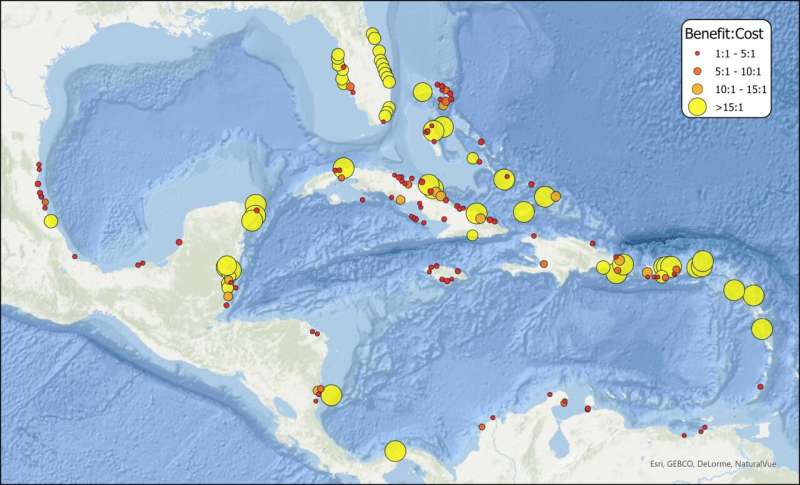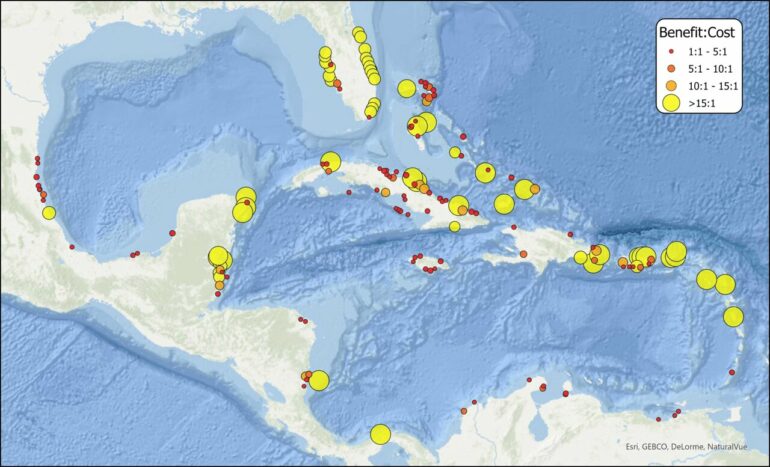A new analysis demonstrates that restoration of mangroves and coral reefs can be a cost-effective solution for coastal flood reduction in more than 20 countries across the Caribbean.
The study, published May 28 in the journal Ecosystem Services, used methods from the risk and insurance industry to provide rigorous valuations of these natural defenses and show that they can deliver a positive return on investment, with the benefits from reduced flood damage exceeding the costs of restoration.
The results point toward new opportunities to support restoration efforts with funds from sources that support hazard mitigation, climate adaptation, and disaster recovery, including the U.S. Federal Emergency Management Agency (FEMA).
“We identify a number of funding sources that have traditionally supported artificial ‘gray infrastructure,’ such as concrete sea walls, and that could be applied to nature-based solutions,” said lead author Michael Beck, a research professor in the Institute of Marine Sciences at UC Santa Cruz who holds the AXA Chair in Coastal Resilience.
Coastal ecosystems such as coral reefs and mangroves act as natural barriers to waves and storm surges and reduce flood damages to people and property. In many places, however, degradation of reefs and coastal wetlands has reduced their natural ability to protect coastlines from flooding and erosion. Effective strategies exist for restoring these critical ecosystems, but funding for restoration projects can be hard to find.

Restoration of mangroves and coral reefs can provide a positive return on investment. This map of the Caribbean shows potential mangrove restoration sites, with size and color of circles representing benefit:cost ratios. The large yellow circles indicate ratios greater than 15:1, estimated using a 30-year project life with a 4% discount rate. © Beck et al., Ecosystem Services
Beck noted that the global spending on disaster recovery is more than 100 times larger than the spending on conservation. “Recovery funding will grow as climate change increases the impacts from storms, and environmental funding will likely shrink as national budgets are strained by natural disasters,” he said.
The study highlights opportunities to align conservation, flood risk reduction, and climate adaptation to reduce storm risks. “Funding for artificial infrastructure such as seawalls can be redirected to natural defenses, which provide multiple benefits beyond coastal protection,” Beck said.
The study’s results for return on investment are robust to changes in discount rates and the timing of flood protection benefits, he added. “This may sound esoteric, but it can be critical to getting funding for restoration projects from sources such as FEMA,” he said.
The researchers identified specific sites where there could be significant returns on investment for coral reef and mangrove restoration across the Caribbean.
More information:
Michael W. Beck et al, Return on investment for mangrove and reef flood protection, Ecosystem Services (2022). DOI: 10.1016/j.ecoser.2022.101440
Provided by
University of California – Santa Cruz
Citation:
Study shows mangrove and reef restoration yield positive returns on investment for flood protection (2022, June 17)



